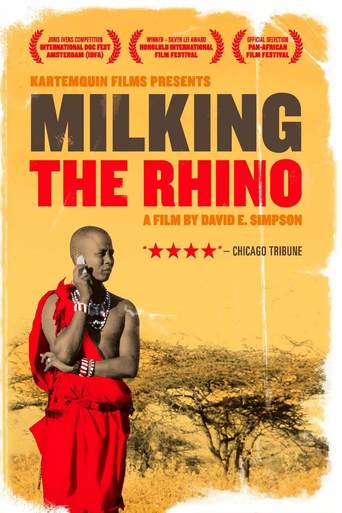

SERIOUSLY. This is what the crap Hollywood still puts out?
... View MoreDreadfully Boring
... View MoreYour blood may run cold, but you now find yourself pinioned to the story.
... View MoreThe movie is wonderful and true, an act of love in all its contradictions and complexity
... View MoreKartemquin Films' latest documentary film, Milking the Rhino, explores current conservation challenges in the two African countries Kenya and Namibia. David Simpson, a long time producer and director with Kartemquin , directed the film. My wife and I attended an evening showing at the Gene Siskel Film Center on September 29th the last night of a 4-day screening.Milking the Rhino explores where people and nature meet. In this case, it's in the midst of two diverse cultures that share the common thread of tourism and the cattle culture. Mixed with those two complications is the history of colonialism that both countries also faced. There are several layers to the film, and Simpson seeks to peel away each one in detail. For an 85-minute film, it's a lot to uncover. Much of the film is set up as a dialog between the two countries as they each seek to understand how best to preserve their way of life and the tourism that provides the "milk" needed to sustain it.Kenya and Namibia both have a history of colonial rule, one that greatly affects the country as a whole, especially tourism and conservation efforts. The film looks at the tension between indigenous Kenyans and Namibians, and the white expatriates that control tourism in the regions. This tension is explored through historical photos and footage that reveals the indigenous people were long ago treated as nothing more than workers on their land, with no choice in its future. During the period of colonial rule, and for many years afterward, poaching wiped out many large numbers of wildlifethe central reason for tourism. Today, many Kenyans and Namibians are finding new ways to bring those numbers back up, in an effort to increase and sustain tourism.In addition to wildlife conservation, the film also explores issues surrounding the authentic tourist experience. Many expatriates in these regions believe they understand the experience tourists are looking for. However, these business owners' lodges and safaris can often be in tension with the local people. Milking the Rhino seeks out stories where this conflict is recognized and worked to a resolution.Milking the Rhino is an excellent movie, and we both thoroughly enjoyed it. Questions raised from the audience during the film's Q&A seemed to suggest the same. The film touches on many issues, and ultimately resolves none, which is a good thing. It is a film that I believe reaches out to the audience in an effort to raise greater awareness and action.
... View More